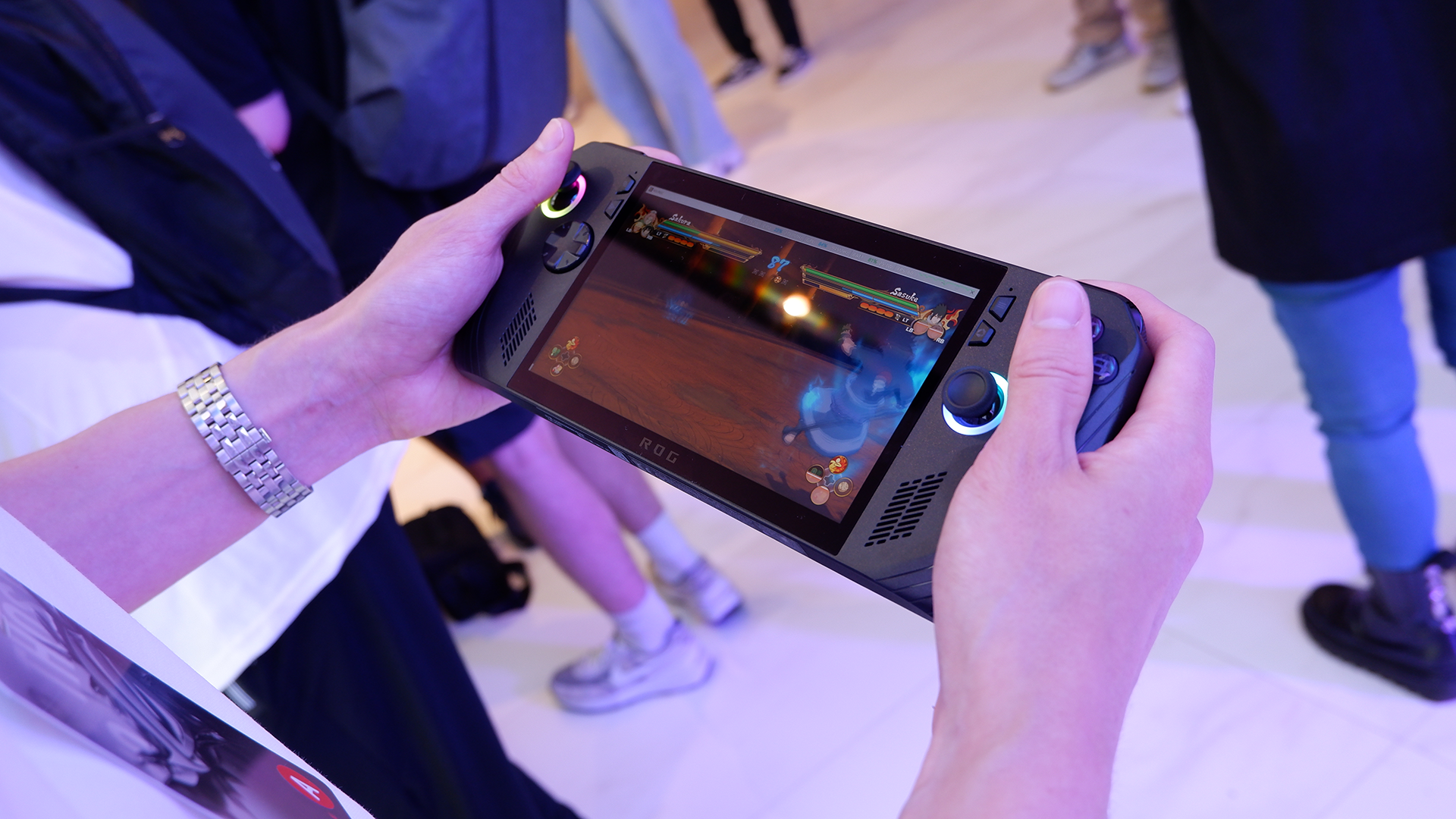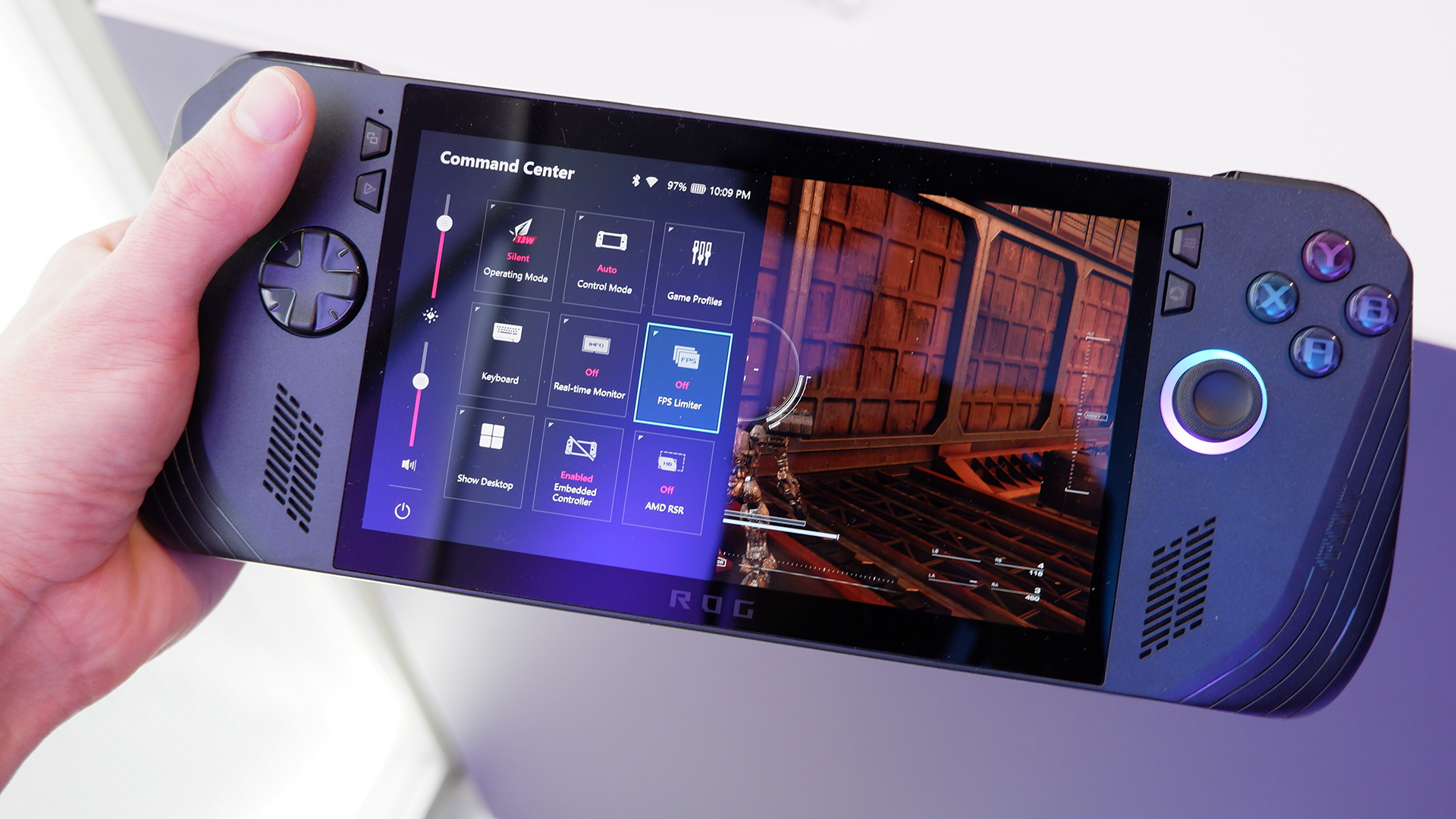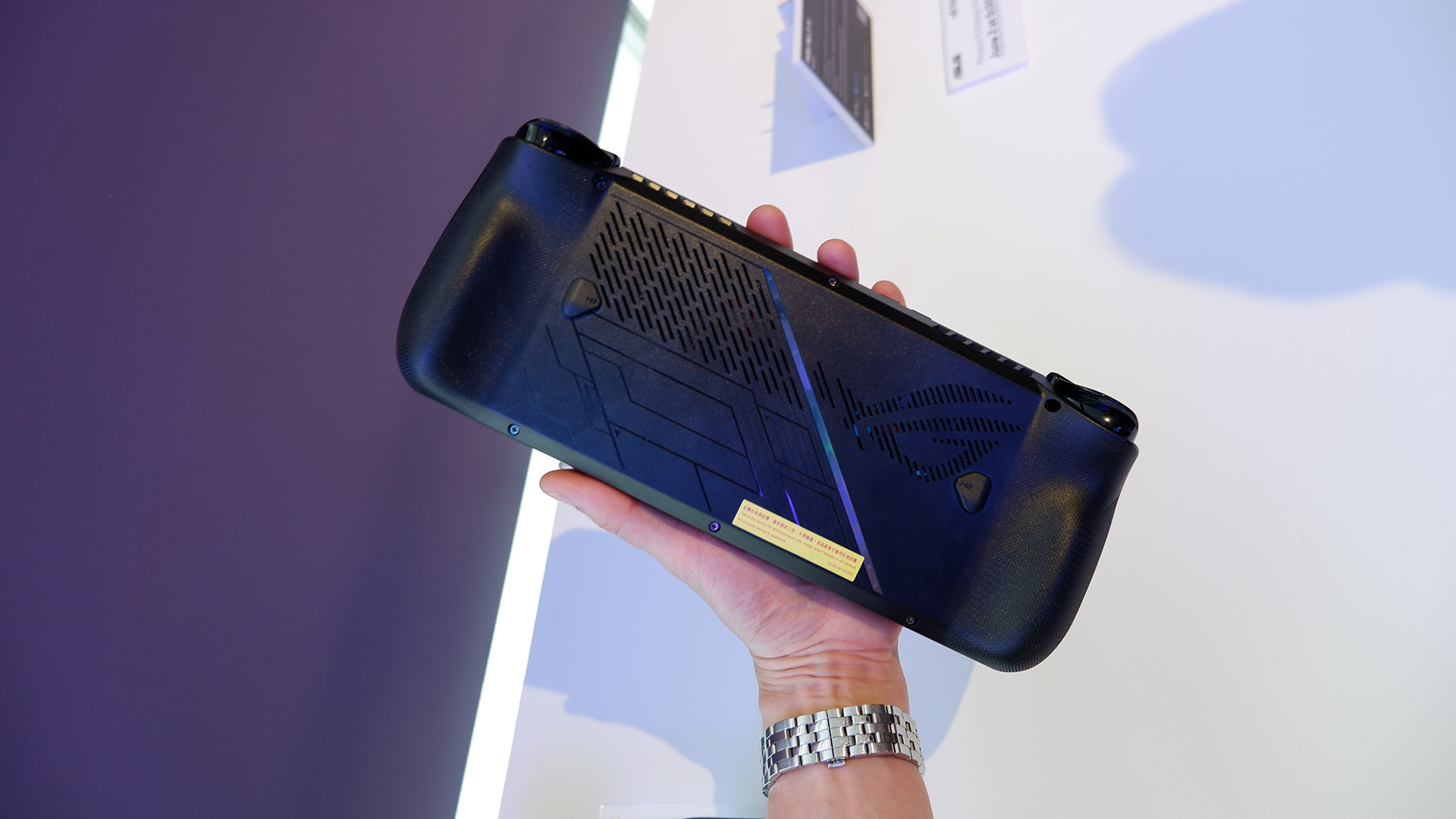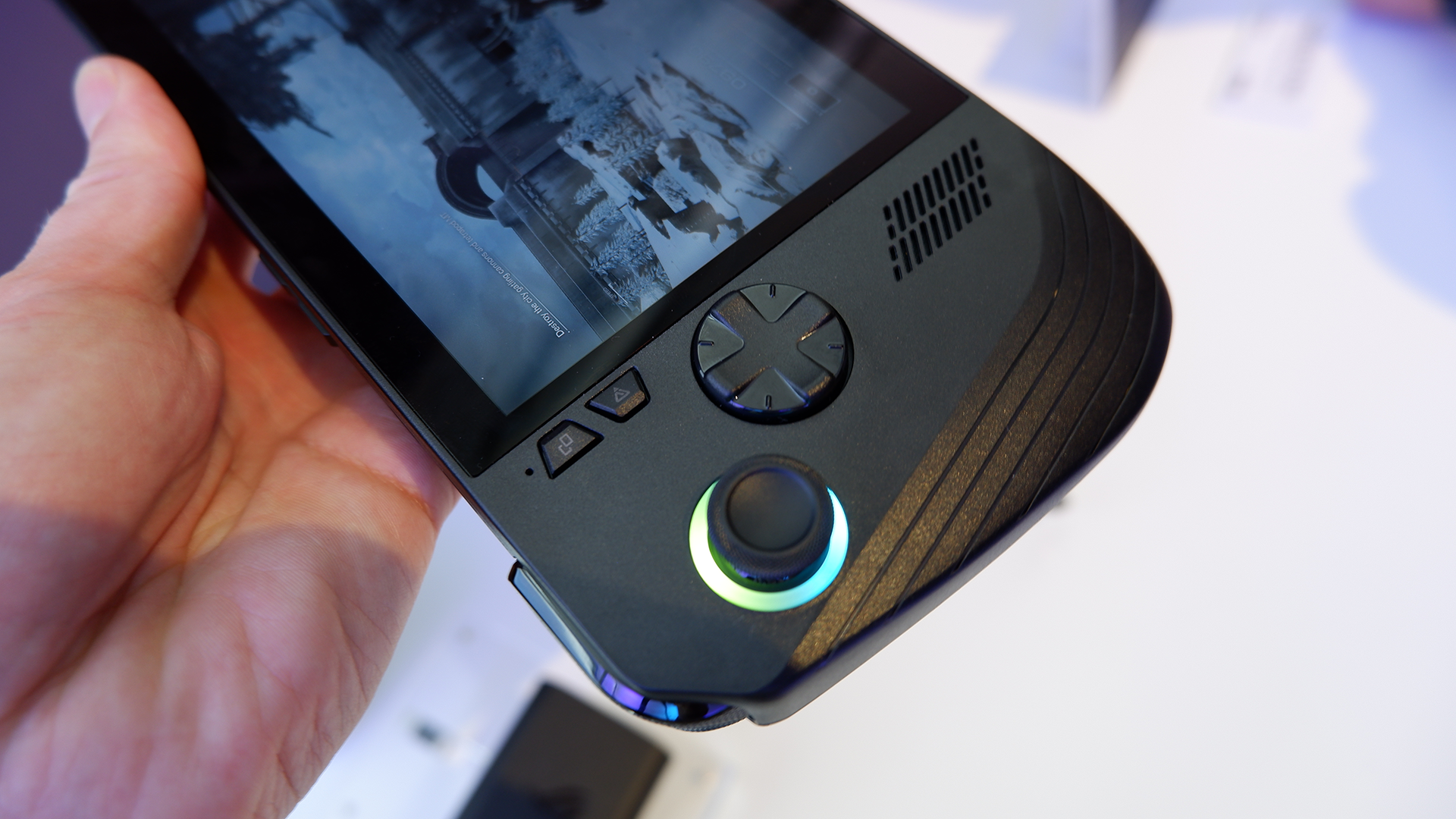Hands on with the $799 ROG Ally X: comfy to hold despite bigger battery and SSD than the original
Shipping in late July.

I've just had some time to play around with the ROG Ally X over at Asus HQ in Taiwan—only moments before the handheld is made available for pre-order at $799.
The new handheld gaming PC, which is more of a mid-generation upgrade than something new altogether, includes a number of key improvements, including to the RAM, battery, SSD, fans, layout, thumbsticks, d-pad and buttons.
The biggest and best upgrade of the lot is the improved battery size: the ROG Ally X has an 80Wh battery—that's double the ROG Ally at 40Wh.
"What's crazy is that we did it without drastically increasing the weight or the thickness of the device," Whitson Gordon, Asus senior manager of product marketing, says at Asus HQ.
The new ROG Ally X weighs 678 grams—70 grams more than the original Ally. It's not a noticeably heavy device, however. I shifted the device from one hand to the other easily enough while fiddling with my camera settings, though how it feels to game on long-term is something I wasn't able to test.
"You will see we were able to offset that number of interesting things and we kept the weight distribution replaced really central," Gordon says.
The chassis is a bit thicker for the bigger battery, but I didn't notice much of a change without the original Ally to hand for comparison. It's hardly hefty. Some of the changes made to the shape of the device have been to improve its general comfort and feel, such as angling the buttons and thumbsticks in a more natural way.
The biggest gaming news, reviews and hardware deals
Keep up to date with the most important stories and the best deals, as picked by the PC Gamer team.

I didn't get a chance to test the battery at the event, either—I don't think Asus or my fellow event go-ers would've looked too kindly on me holding onto one for well over an hour or two. For reference, in our original testing of the ROG Ally it managed to run PCMark's gaming benchmark for around 57 minutes before giving up. That should be significantly improved, if not actually doubled, on the ROG Ally X.
The chip inside the Ally X remains the AMD Z1 Extreme that shipped with the original ROG Ally's top model, thus performance will likely mostly stay the same. On the plus side, this means all that extra capacity goes towards a longer battery life.
You can now fit up to 2280 form factor SSDs inside the Ally X—same as you'd expect to find inside most desktop gaming PCs. This should make for an easier switch if you're looking to upgrade the storage.
You should mostly be just fine with the 1TB 2280 SSD included as standard on a handheld PC, however.

The Ally X comes with 24 GB of LPDDR5X RAM, which now runs at 7500 MT/s. That means there's more memory available to split between the CPU and GPU component than the original Ally at 16 GB, and it's quicker to boot. That could see some games and applications run a little better, or at the very least not run into as many issues.
"16 [gigabytes] for the system, eight [gigabytes] for VRAM, which is actually the most common configuration we see in the PC gaming space as a whole. And for a 1080p device that's going to be really nice."
A few other noteworthy upgrades include new, more efficient fans, more durable thumbstick modules, new d-pad and two Type-C USB ports—one USB 4 compatible and the other USB 3.2 Gen 2. The SD slot has also moved, though admittedly I didn't see where it has moved to. That's supposedly not because of the ROG Ally's SD card slot issues, though it should be a handy excuse for Asus to fix things.


Catch up with Computex 2024: We're on the ground at Taiwan's biggest tech show to see what Nvidia, AMD, Intel, Asus, Gigabyte, MSI and more have to show.
The whole lot will cost $799. It's available to pre-order now, though the Ally X will only begin to ship towards the end of July. That's around $100 more than the original Z1 Extreme edition of the ROG Ally.
There's also a new official hard case and universal charger, which will be sold separately to the device itself.
It's tough for me to say whether it's worth the extra dosh right now, as I've not really been able to test its key improvements for longevity. The battery life could be persuasive if it really is hugely in excess of the original model, at least, though the lack of new processor isn't.

Jacob earned his first byline writing for his own tech blog. From there, he graduated to professionally breaking things as hardware writer at PCGamesN, and would go on to run the team as hardware editor. He joined PC Gamer's top staff as senior hardware editor before becoming managing editor of the hardware team, and you'll now find him reporting on the latest developments in the technology and gaming industries and testing the newest PC components.

